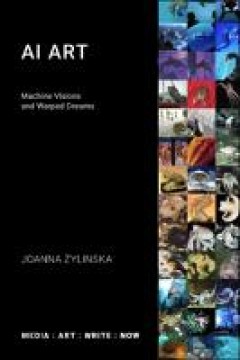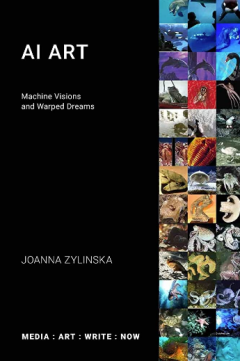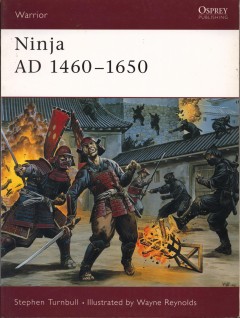Ditapis dengan
E-book Efficient Screening Techniques to Identify Mutants with TR4 Resistance…
Bananas and plantains are among the most important staple food crops for peopleliving in tropical and subtropical countries. They are herbaceous monocots belong-ing to the genusMusa; most are seedless, polyploid, sterile and clonally propagated.The majority of banana and plantains are consumed locally.Vegetatively propagated crops (VPCs) such as banana pose unique problemscompared to cereals be…
- Edisi
- -
- ISBN/ISSN
- 9783662649152
- Deskripsi Fisik
- 191 hlm
- Judul Seri
- -
- No. Panggil
- 576.53 AHM e
E-book Decolonial Ecologies : The Reinvention of Natural History in Latin Ame…
A white gallery wall is marked out at intervals to a length of twenty-five feet. Stretching out above, black capital letters stamp out the phrase “el cocodrilo de Humboldt no es el cocodrilo de Hegel” (Humboldt’s crocodile is not Hegel’s). Near the end on the left, a crocodile’s eye appears on a monitor; at the right, another shows its tail. José A…
- Edisi
- -
- ISBN/ISSN
- 9781800649750
- Deskripsi Fisik
- 298 hlm
- Judul Seri
- -
- No. Panggil
- 902 PAG d
E-book Japanese Warrior Monks ad 949 - 1603
Buddhism is popularly regarded in the West as being a very peaceful religion, but this way by no means the image presented by the famous warrior monks of medieval Japan. From the 10th century onwards the great monastic foundations of Nara and Mount Hiei maintained private armies that terrified the courtiers and citizens of the capital with their religious and military power. Armed with long nag…
- Edisi
- -
- ISBN/ISSN
- 1841765732
- Deskripsi Fisik
- 68 hlm
- Judul Seri
- -
- No. Panggil
- 206.5752 TUR j
E-book Samurai Warfare
The Ancestors of the Samurai The word 'samurai', which is commonly used for all varieties of ancient Japanese warrior, actually signifies the military elite of old Japan, a knightly caste who commanded armies, and also led their followers into battle. Their military and political skills eventually enabled them to control civilian governments, developing, through almost constant civil warfare, a…
- Edisi
- -
- ISBN/ISSN
- 1854092804
- Deskripsi Fisik
- 157 hlm
- Judul Seri
- -
- No. Panggil
- 739.7 TUR s

E-Book Postcolonial Oceans: Contradictions, Heterogeneities, Knowledges, Mate…
This book contributes to the study of oceans, seas, coastal waters, and rivers within blue humanities by broadening, circulating, and interweaving knowledge about such waters, ocean epistemologies, and sea narratives from pluriversal epistemological, geographical, cultural, and disciplinary perspectives. The contributors from Africa, Asia, the Caribbean, Europe, North America and the Pacific ex…
- Edisi
- -
- ISBN/ISSN
- 9783968221588
- Deskripsi Fisik
- 474 halaman
- Judul Seri
- -
- No. Panggil
- 551.46 CHA p

E-Book AI Art
Can computers be creative? Is algorithmic art just a form of Candy Crush? Cutting through the smoke and mirrors surrounding computation, robotics and artificial intelligence, Joanna Zylinska argues that, to understand the promise of AI for the creative fields, we must not confine ourselves solely to the realm of aesthetics. Instead, we need to address the role and position of the human in the c…
- Edisi
- -
- ISBN/ISSN
- 9781785420863
- Deskripsi Fisik
- 181 halaman
- Judul Seri
- -
- No. Panggil
- 006.3 ZYL a
E-book Posthumanism and the Graphic Novel in Latin America
The emergence of the contemporary graphic novel across many regions of the world has been closely implicated with posthumanist thought. Science fiction narratives forged from multiple real and imagined cou-plings between technology, bodies and subjectivities feature prom-inently in the various competing genealogies for the medium. The French bande dessinée tradition,…
- Edisi
- -
- ISBN/ISSN
- 9781911576501
- Deskripsi Fisik
- 266 hlm
- Judul Seri
- -
- No. Panggil
- 741.5 KIN p
E-book Managing Generation Z : Motivation, Engagement and Loyalty
Generation Z (Gen Z) is the young generation born between the mid-1990s and 2010s. Currently, they enter the market, starting their first jobs. Therefore, managers need to shape the company workplace environment to encourage young employees to work efficiently and for them to connect their future with the company. Only then will both managers and employees share mutual satis…
- Edisi
- -
- ISBN/ISSN
- 9781003353935
- Deskripsi Fisik
- 140 hlm
- Judul Seri
- -
- No. Panggil
- 658.3 DUA m

E-book AI Art : machine visions and warped dreams
Can computers be creative? Is algorithmic art just a form of Candy Crush? Cutting through the smoke and mirrors surrounding computation, robotics and artificial intelligence, Joanna Zylinska argues that, to understand the promise of AI for the creative fields, we must not confine ourselves solely to the realm of aesthetics. Instead, we need to address the role and position of the human in the c…
- Edisi
- -
- ISBN/ISSN
- 9781785420856
- Deskripsi Fisik
- 181 hlm. : color, ill.
- Judul Seri
- -
- No. Panggil
- 111.85 ZYL a

Ninja, A.D. 1460-1650
The ninja were the secret agents and assassins of feudal Japan and they remain a subject of enduring fascination. They first arose during the power struggles of 9th and 10th century Japan - where they catered for an increasing demand for spies, informants and assassins - and were used until the mid-1600s when, due to a campaign to destroy them, disappeared.
- Edisi
- -
- ISBN/ISSN
- 978-1-84176-525-9
- Deskripsi Fisik
- ilus 64 hlm. 18x25 cm
- Judul Seri
- -
- No. Panggil
- 355 TUR n
E-book AI art : Machine visions and warped dreams
AI Art has been shaped by a number of broader questions with regard to art, media and technology: Is there an ontological difference between early computergenerated art, net art and the more recent forms of AI-driven art? Or is it just a difference of degree, i.e. of the mode and intensity of technological entanglement?
- Edisi
- -
- ISBN/ISSN
- -
- Deskripsi Fisik
- 181 hlm; 10 MB
- Judul Seri
- -
- No. Panggil
- 006.3 ZYL a

OXFORD ADVACED LEARNER'S DICTIONARY: International student's
- Edisi
- ed.8
- ISBN/ISSN
- 978-0-19-479914
- Deskripsi Fisik
- 1732hlm; illus;14 x 21.5 cm
- Judul Seri
- -
- No. Panggil
- 423 TUR o
- Edisi
- ed.8
- ISBN/ISSN
- 978-0-19-479914
- Deskripsi Fisik
- 1732hlm; illus;14 x 21.5 cm
- Judul Seri
- -
- No. Panggil
- 423 TUR o

 Karya Umum
Karya Umum  Filsafat
Filsafat  Agama
Agama  Ilmu-ilmu Sosial
Ilmu-ilmu Sosial  Bahasa
Bahasa  Ilmu-ilmu Murni
Ilmu-ilmu Murni  Ilmu-ilmu Terapan
Ilmu-ilmu Terapan  Kesenian, Hiburan, dan Olahraga
Kesenian, Hiburan, dan Olahraga  Kesusastraan
Kesusastraan  Geografi dan Sejarah
Geografi dan Sejarah